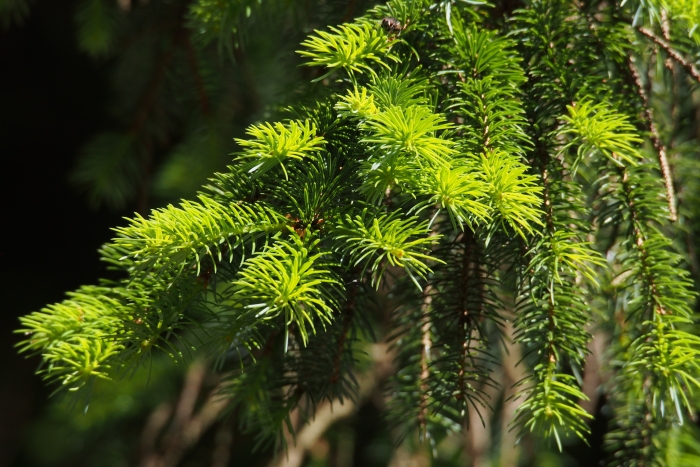Jezo Spruce
(Picea jezoensis)
Jezo Spruce (Picea jezoensis)
/
/

© harum.koh
CC BY-SA 4.0
Image By:
© harum.koh
Recorded By:
Copyright:
CC BY-SA 4.0
Copyright Notice:
Photo by: © harum.koh | License Type: CC BY-SA 4.0 | License URL: http://creativecommons.org/licenses/by-sa/4.0/ | Uploader: harumkoh | Publisher: iNaturalist |

























Estimated Native Range
Summary
Picea jezoensis, commonly known as Jezo spruce, is a large evergreen tree that can reach up to 164 feet in height with a trunk diameter of up to 6.5 feet. It is native to the cold, humid temperate rainforests of northeast Asia, specifically within 250 miles of the Pacific Ocean, including the central mountains of Japan, the Changbai Mountains on the China-North Korea border, and eastern Siberia’s regions such as the Sikhote-Alin, Kuril Islands, Sakhalin, and Kamchatka. The Jezo spruce is adapted to grow in cool climates and is often found at higher elevations where snowfall is common.
The Jezo spruce has needle-like leaves that are dark green on the upper surface with no stomata, and blue-white below with dense bands of stomata, which are adaptations to its native cold environments. Its bark is thin and scaly, providing some protection against the elements. The tree produces pendulous, slender, cylindrical cones that mature to a pale brown color. In cultivation, Jezo spruce is valued for its stately appearance and is used in large gardens and parks. It requires full sun to partial shade, moist but well-drained soil, and can tolerate cold temperatures. While not commonly available in the nursery trade, it can be a magnificent specimen tree where space allows. However, potential growers should be aware of its large size and ensure adequate space for growth.CC BY-SA 4.0
The Jezo spruce has needle-like leaves that are dark green on the upper surface with no stomata, and blue-white below with dense bands of stomata, which are adaptations to its native cold environments. Its bark is thin and scaly, providing some protection against the elements. The tree produces pendulous, slender, cylindrical cones that mature to a pale brown color. In cultivation, Jezo spruce is valued for its stately appearance and is used in large gardens and parks. It requires full sun to partial shade, moist but well-drained soil, and can tolerate cold temperatures. While not commonly available in the nursery trade, it can be a magnificent specimen tree where space allows. However, potential growers should be aware of its large size and ensure adequate space for growth.CC BY-SA 4.0
Plant Description
- Plant Type: Tree
- Height: 75-100 feet
- Width: 20-40 feet
- Growth Rate: Slow
- Flower Color: N/A
- Flowering Season: Non-Flowering
- Leaf Retention: Evergreen
Growth Requirements
- Sun: Full Sun
- Water: Medium
- Drainage: Medium
Common Uses
Low Maintenance
Natural Habitat
native to the cold, humid temperate rainforests of northeast Asia
Other Names
Common Names: Yezo Spruce , Yeddo Spruce , Ezo Spruce , Yeddo Smreka , Ezo-Matsu , Kuro-Ezo , Yu Lin Yun Shan
Scientific Names: Picea jezoensis , Abies ajanensis , Abies firma var. jezoensis , Abies jezoensis , Picea ajanensis , Picea ajanensis , Picea jezoensis var. jezoensis , Pinus firma var. jezoensis , Pinus jezoensis , Pseudotsuga jezoensis
GBIF Accepted Name: